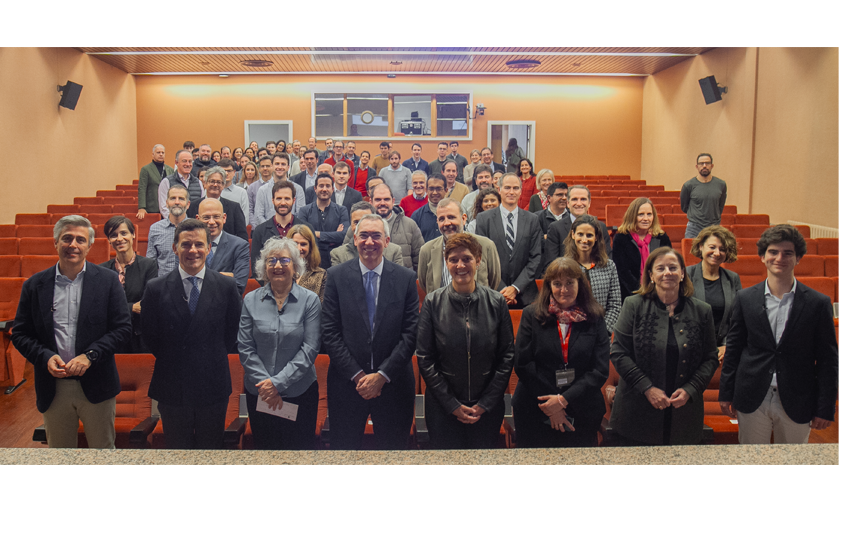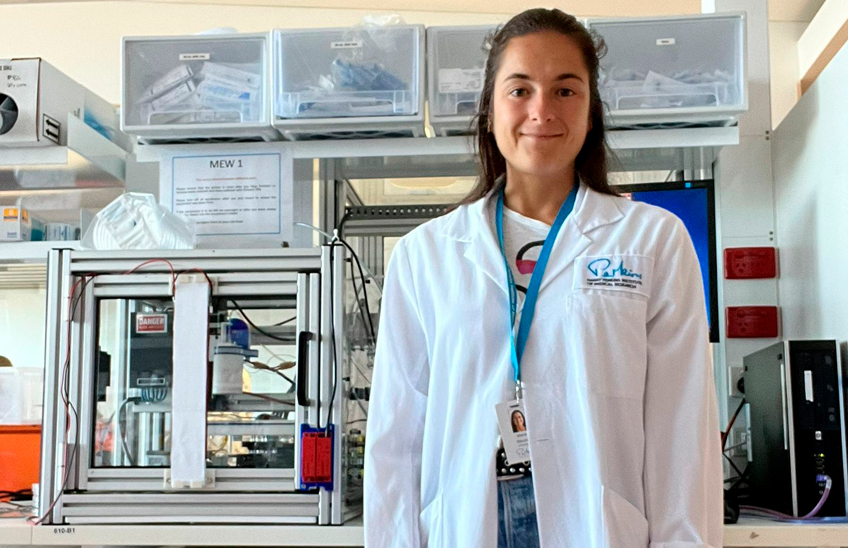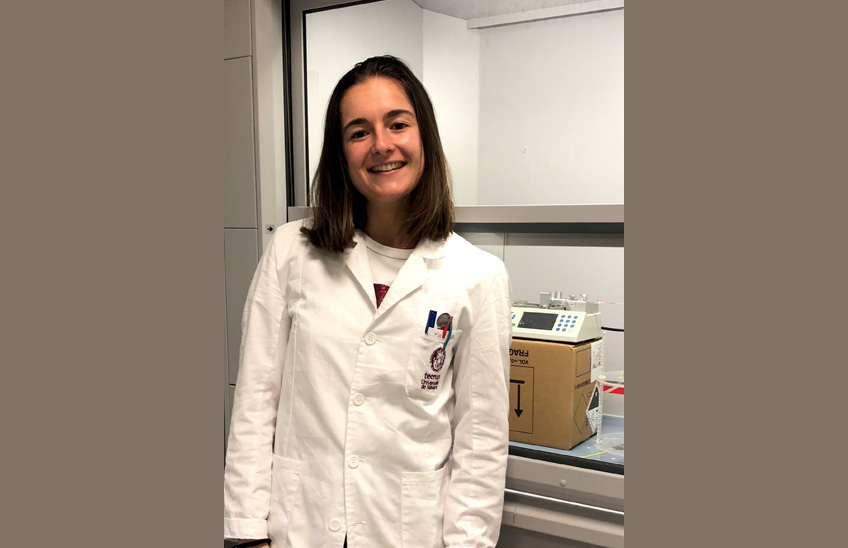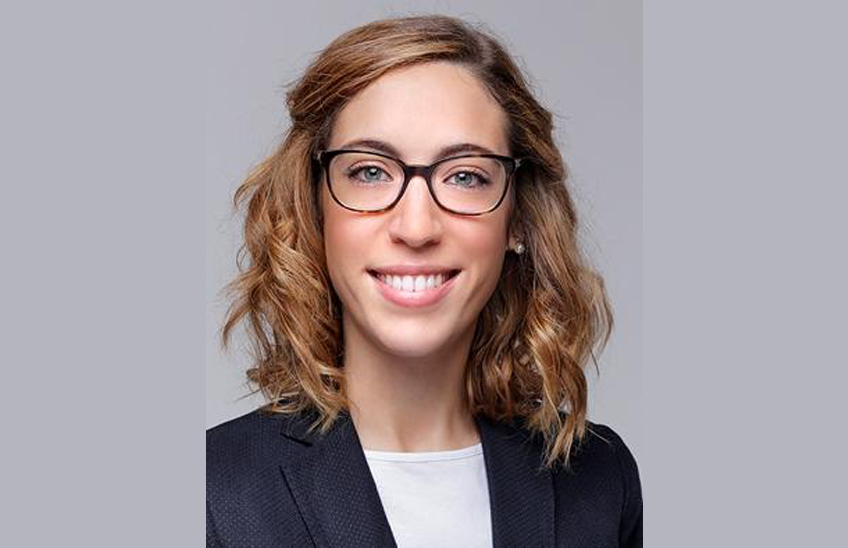"I hope that my joining Tecnun will help us to continue to grow and become more visible to the outside world".
Idoia Ochoa, winner of the MIT Innovators under 35 award, joins the School of Engineering of the University of Navarra
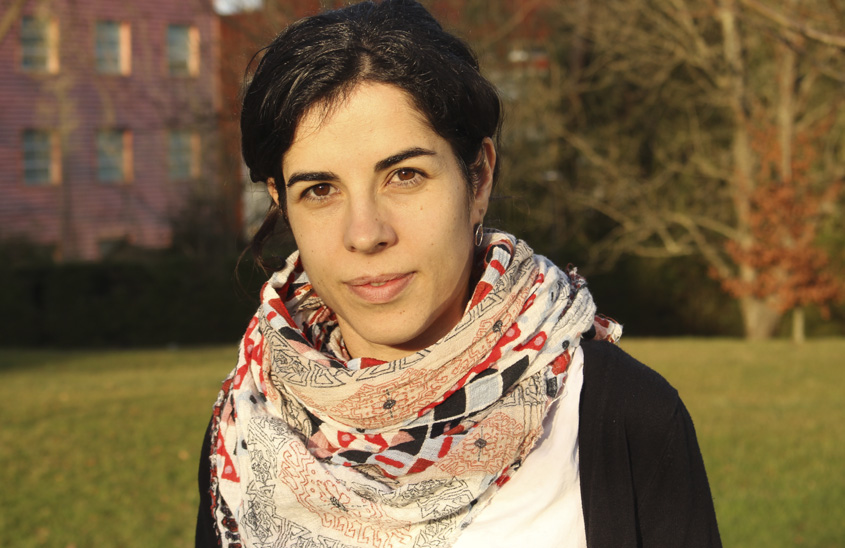
FotoServiciode Comunicación/Idoia Ochoa at Tecnun
12 | 02 | 2021
Dr. Idoia Ochoa graduated in Telecommunications Engineering from Tecnun in 2009. After obtaining a scholarship from La Caixa to study at programs of study for postgraduate studies in the United States, she joined Stanford University where she obtained a Master's Degree in Electrical Engineering in 2012 and a doctorate at the same department in 2016.
During this period he also did internships at companies such as Google and Genapsys. After graduating from doctorate, she joined the University of Illinois at Urbana-Champaign as an assistant professor, where she created her own group at research, as well as working at teaching and serving the university by participating in different committees. After three years at Urbana-Champaign, Idoia joined Tecnun in 2020 as a collaborating professor.
What is the focus of your research?
In the development of compression algorithms, with emphasis on data biological and sequencing, and in the application of machine learning methods in data biomedical, within the field of computational biology, with the goal to search for markers that can accelerate personalised medicine. In addition, in my research I also apply techniques from signal processing, information theory, and statistics, among others.
Within this field, have you won competitive projects as principal investigator?
Yes, I have won several competitive projects as principal investigator. For example, a project for the data analysis omics conceived by the international Chan Zuckerberg Initiative, as well as a Ramón y Cajal (2020) and the Gipuzkoa Fellows (2020). In addition, I have recently been awarded the MIT Innovators under 35 award, and I hold an international patent.
Why did you decide to join Tecnun?
Both my husband and I wanted to return 'home', and the opportunity arose for me to join Tecnun, and for my husband to join Cima. Our experience as students at the University of Navarra was very good, and it seemed to us that it would be an ideal place to continue growing professionally and as people.
Both the Electronics and Electronics group , to which I belong, and Computational Biology, which is my area of research, are leading in their areas of knowledge, so I hope to contribute as much as possible with my research and my teaching. I also hope that my incorporation will serve to continue growing, obtaining more projects -both national and international-, generating knowledge through publications and presentations at conferences, and expanding our collaborations with the outside world, so that we become more visible to the outside world, and thus attract more talent.
What is the line of research you are working on?
My research focuses mainly on the development of computational methods for data analysis genomics, using engineering techniques, such as machine learning, statistical learning, signal processing, and information theory. The idea is to facilitate and improve the analysis of these data, which are becoming more and more common, due to their great capacity to advance, for example, in the field of personalised medicine. In addition, I have a lot of experience in the development of compression methods for data omics, in order to facilitate the storage of these data and reduce the associated costs.
Any specific project that you are currently developing?
A project that we have just submitted for publication in the journal Nature Communications, and which is currently under second review, presents a new method to look for DNA variations in tumours, called MOSS. The main difference with previously proposed methods is that we can analyse several samples together. This is very important, as the variations that appear in tumours generally have a very small frequency (and are therefore difficult to observe in the sequenced data ) and it is difficult to differentiate them from sequencing errors. When several samples are analysed at the same time, there is more information to distinguish the variations that are actually present. Being able to find genomic variations in tumours is core topic, as they can influence early detection of cancer as well as treatment. Therefore, having an accurate set of variations is paramount and can affect the patient's prognosis.

